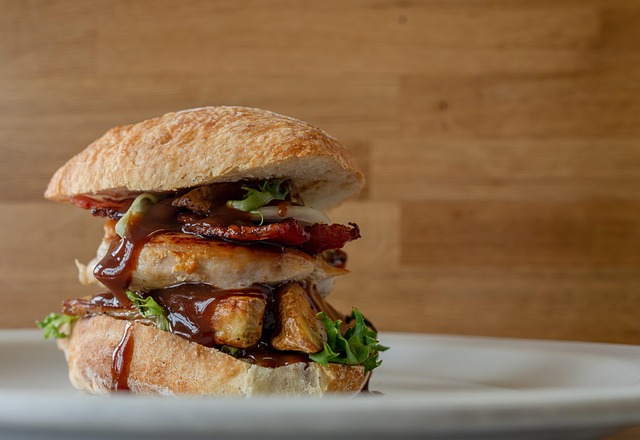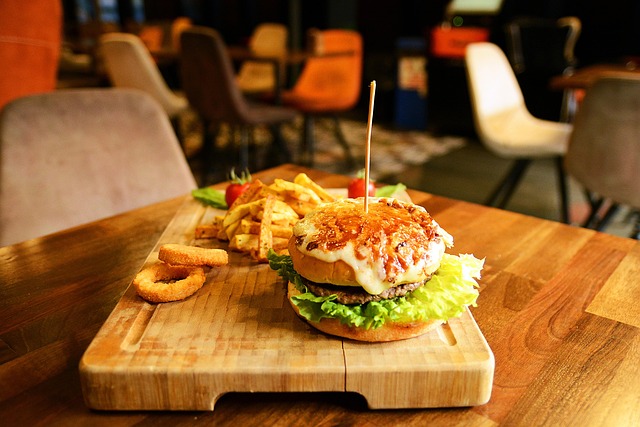The "burger challenge" metaphorically guides fast-food chains to innovate, navigate market trends, and meet customer preferences through SMART goals and creative thinking. By embracing wild ideas, prototyping, testing, and market validation, businesses can transform challenges into advantages, save resources, and foster a culture of innovation that drives growth in competitive markets. Overcoming resistance to change is crucial for successful implementation.
In today’s competitive landscape, successful innovation planning is a game-changer. This article explores a strategic approach to tackling the iconic “burger challenge,” serving as a metaphor for complex problems demanding creative solutions. We’ll guide you through setting meaningful goals, harnessing ideation techniques, and iteratively refining ideas through prototyping. From market validation to overcoming organizational barriers, discover proven steps to turn innovative concepts into tangible success stories, all while keeping the burger challenge in focus.
- Understanding the Burger Challenge: Unlocking Creative Solutions
- Setting Innovation Goals: A Strategic Roadmap
- Ideation Techniques: Sparking Unique Ideas
- Prototyping and Testing: Iterative Refinement
- Market Validation: Ensuring Customer Relevance
- Implementing Change: Overcoming Organizational Barriers
Understanding the Burger Challenge: Unlocking Creative Solutions

The “burger challenge” is a concept that illustrates the importance of innovation planning in finding creative solutions to seemingly simple problems. Imagine a scenario where a fast-food chain aims to enhance its menu by introducing a new burger option. While the idea may seem straightforward, the challenge lies in understanding customer preferences, market trends, and competitive offerings. This involves extensive research and analysis to unlock unique features that set their burger apart.
By embracing the burger challenge, businesses can foster a culture of innovation planning. It encourages them to delve into market dynamics, identify gaps, and explore untapped opportunities. Through this process, they can develop game-changing products or services that captivate consumers and stay ahead of the competition. The key is to view everyday challenges as creative opportunities, ensuring every step in the planning process is meticulously crafted to achieve a successful and delicious outcome—much like crafting the perfect burger.
Setting Innovation Goals: A Strategic Roadmap

Setting innovation goals is the first step in creating a strategic roadmap that propels your business forward, much like a compass guides a traveler through an unfamiliar landscape. These goals should be specific, measurable, achievable, relevant, and time-bound (SMART). For instance, instead of a vague goal like “increase sales,” aim for a targeted figure like “enhance customer satisfaction by 20% within the next fiscal year.” This clarity allows you to develop innovative solutions tailored to your Burger Challenge, whether it’s introducing new menu items, streamlining operational efficiency, or enhancing digital channels.
A well-defined innovation strategy ensures that every initiative aligns with your overarching business objectives. Consider the “burger challenge” as a metaphor for navigating complex problems. Just as a chef creates a dish by combining various ingredients, strategic planning involves integrating diverse elements – market trends, customer feedback, technological advancements – to develop innovative solutions. By setting robust goals and following a structured roadmap, businesses can turn challenges into opportunities, ensuring they stay ahead in a competitive market.
Ideation Techniques: Sparking Unique Ideas

In the realm of innovation planning, sparking unique ideas is akin to overcoming a burger challenge—it’s all about thinking outside the box. Techniques like brainstorming sessions, mind mapping, and even reverse engineering can help foster creative solutions. By encouraging diverse perspectives and breaking free from conventional thought patterns, teams can navigate complex problems with fresh eyes.
Imagine taking on a burger challenge where the goal is to create a new flavor combination. This approach can be applied to innovation planning by presenting challenges as opportunities for discovery. Encouraging wild and seemingly impossible ideas initially helps unlock a wealth of potential solutions that may have been previously overlooked. This liberally open mindset paves the way for refinement, collaboration, and the eventual development of truly groundbreaking concepts.
Prototyping and Testing: Iterative Refinement

Prototyping and testing are integral parts of innovation planning, enabling businesses to refine their ideas through iterative processes. This approach, often referred to as the “burger challenge,” involves building a minimum viable product (MVP) that offers a basic version of the intended solution. By gathering feedback from early adopters or focus groups, companies can quickly identify what works and what needs improvement. The “burger challenge” metaphor highlights the importance of starting with a simple, functional prototype—a core burger patty and bun—before adding more complex ingredients. This strategic approach ensures that efforts are focused on essential features, minimizing time and resources spent on non-critical elements.
Through continuous testing and user feedback loops, prototypes evolve into more robust solutions. Each iteration refines the product, making it closer to market readiness. This iterative refinement process mirrors the steps a chef takes to perfect their burger recipe, carefully adjusting seasoning, adding toppings, and tweaking cooking times until the ultimate culinary masterpiece is achieved. Similarly, businesses can refine their innovations by listening to customers, incorporating feedback, and making data-driven decisions.
Market Validation: Ensuring Customer Relevance

Market validation is a crucial step in innovation planning, especially when introducing a new product or service, such as a revolutionary burger concept. The burger challenge isn’t just about crafting a delicious patty; it’s about understanding and catering to customer needs and preferences. Before investing resources, businesses must assess market demand and gauge potential consumers’ interest and acceptance.
This process involves gathering feedback from target audiences, conducting surveys, and analyzing industry trends. By doing so, companies can refine their offerings, ensuring they meet or exceed customer expectations. Market validation helps avoid the risk of creating a product that fails to resonate with its intended market, thus saving time, money, and resources in the long run.
Implementing Change: Overcoming Organizational Barriers

Implementing change within an organization, especially when it comes to innovation planning, can be a challenging task. One often-cited example, known as the “burger challenge,” highlights common barriers that prevent successful adoption of new ideas. The challenge poses this scenario: imagine a team presented with a revolutionary new way to prepare burgers, offering significant improvements in taste and nutrition. Despite its benefits, the team might face resistance due to fear of the unknown, attachment to existing processes, or concerns about customer acceptance.
Overcoming these barriers requires strategic planning and a culture that embraces change. It involves open communication to address fears, involving stakeholders in the process, and providing training and support to ensure everyone understands and accepts the new approach. By learning from the burger challenge and similar scenarios, organizations can create an environment where innovation thrives, fostering adaptability and growth in today’s competitive market.
